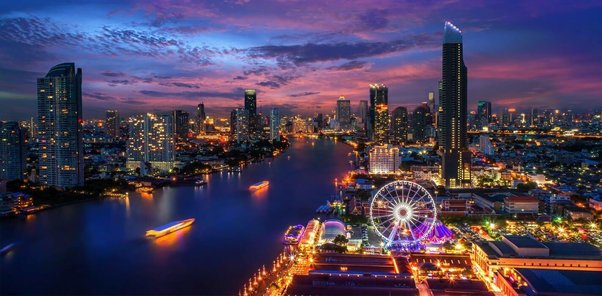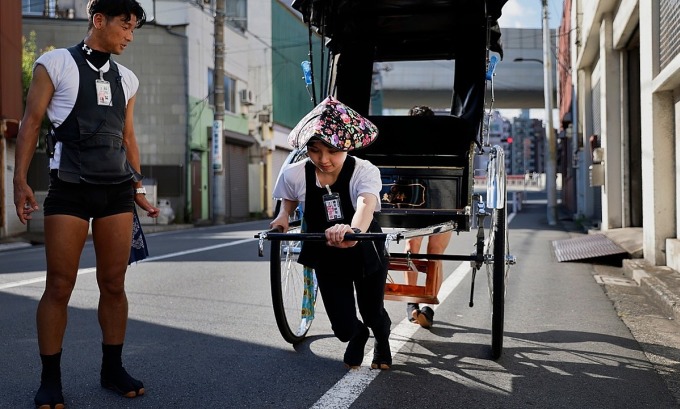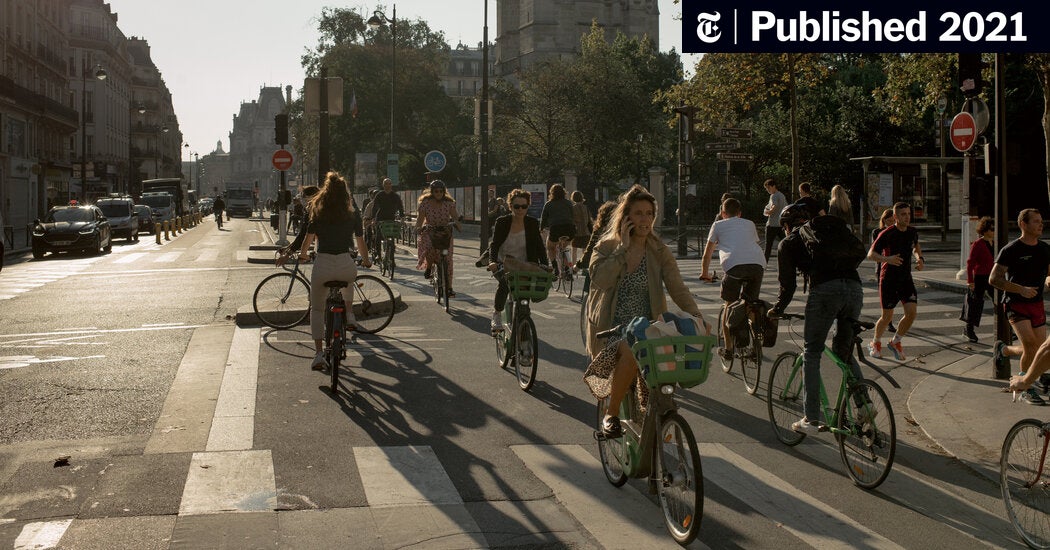뉴스&스피킹(영자신문)
하루 10분이면 영어에 대한 두려움을 극복하고 누구나 유창하게 영어를 구사하실 수 있습니다.
-
 Why Immigrants Are More Hopeful Than US-born Americans Immigrants in America are more hopeful about the future than citizens who were born in the United States.
Why Immigrants Are More Hopeful Than US-born Americans Immigrants in America are more hopeful about the future than citizens who were born in the United States.
That is what a recent opinion study of 3,358 immigrant adults found.
The study, or survey, aimed to find out what the immigrant adults thought about a number of issues.
Shannon Schumacher is a researcher at KFF, a nonprofit organization based in San Francisco that works with health policy. It was formerly known as the Kaiser Family Foundation.
She described what the immigrants told her this way: “They said, ‘You know, I face challenges here in the U.S., but it's far better than where I came from. And I have this belief that things will be better for my children.’”
Schumacher added, “Whether that's their education, their safety, their economic opportunities…they think that they're better off and their children are better off.”
The survey was a partnership between KFF and the Los Angeles Times newspaper. The organizations carried out the study between April 10 and June 12, 2023.
The immigrants answered questions by telephone, mail, and online. The questions could be answered in any of the 10 most commonly spoken languages in the United States. They include English, Spanish, Chinese, Korean, Vietnamese, Portuguese, Haitian-Creole, Arabic, French and Tagalog.
Schumacher said it is the most complete survey of immigrants in the U.S. today.
“The survey can really help inform the public more about immigrants and really bring their voices to the forefront,” she said. Schumacher added, “We don't actually hear about immigrants often in their own voices.”
Immigrants make up 16 percent of adults in the U.S. They come from many different countries and are from many classes of people. Their belief in a better future remains although they face many difficulties.
Most of the immigrants in the survey have jobs. About half said they have experienced discrimination in the workplace. Three in 10 said they had been paid less for doing the same job or have had fewer opportunities to get a better job or increased pay, compared to their U.S.-born coworkers.
Health care can be another problem. One in five immigrants delayed or did not get health care in the past few years. Often the reason is lack of money or health insurance. And if they see a medical worker, the experience is not always good.
Schumacher said: “About one in four immigrants say they've been treated unfairly in a health care setting, such as being talked down to.” She added that they might not have a health care provider explain things in a way they can understand. They also might not have had someone explain issues in their language.
The survey said that Black and Hispanic immigrants face the most discrimination.
Researchers worked with activist groups within the different immigrant communities to find people to talk to. The researchers said the English word “discrimination” was a problem because it does not always mean the same thing in different cultures and languages.
“People aren’t sure what that means,” Schumacher said. She added that they might use different words, “or they say something that maybe we as researchers would say, ‘Oh, that's discrimination,’ but they call it bullying or someone just being mean.”
To deal with possible miscommunication, researchers asked direct questions to identify experiences that they defined as discrimination. They did this even if the survey subject did not call the experience “discrimination.” For example, the researcher might ask: “Have you ever been not paid for all the hours you've worked?” “Have you been harassed or threatened or been told to go back to your country?”
I’m Mario Ritter, Jr.View -
 Is ‘Panda Diplomacy’ Coming to an End? The U.S. National Zoo’s three giant pandas are set to return to China in early December. There are no public signs that the 50-year-old exchange agreement made by President Richard Nixon will continue.
Is ‘Panda Diplomacy’ Coming to an End? The U.S. National Zoo’s three giant pandas are set to return to China in early December. There are no public signs that the 50-year-old exchange agreement made by President Richard Nixon will continue.
China experts say the possible end of the National Zoo’s agreement to keep pandas shows a trend. With diplomatic tensions running high between China and some Western governments, China appears to be slowly pulling back its pandas from Western zoos as their agreements end.
Dennis Wilder of Georgetown University called the trend “punitive panda diplomacy.” Wilder noted that two other American zoos have lost their pandas in recent years. Zoos in Scotland and Australia are facing similar departures with no signs of their loan agreements being renewed.
China currently lends 65 pandas to 19 countries through “cooperative research programs.” The stated mission of these programs is to better protect pandas. The pandas return to China when they reach old age and any cubs born are sent back to China at around age three or four.
The departure of the National Zoo’s pandas would mean that the only giant pandas left in America would be at the Atlanta Zoo. That loan agreement ends late next year.
Wilder said the Chinese possibly could be “trying to send a signal.”
Wilder pointed to a number of disagreements between the sides. The U.S. government has put sanctions in place on well-known Chinese citizens and officials. The U.S. has also placed restrictions on the import of semiconductors made in China. Semiconductors are important parts used in making computing devices.
U.S. officials have said China-produced drugs such as fentanyl are appearing in American cities; U.S lawmakers are suspicious about Chinese ownership of the social media service TikTok. And many Americans were angered over Chinese balloons floating over America.
Wilder said China is convinced that “NATO and the United States are lining up against China.”
The panda-related tension has even appeared in the U.S. Senate recently. Pennsylvania Democrat John Fetterman appeared to object to China buying American farmland. He said, “…They’re taking back our pandas. You know, we should take back all their farmland.”
Tensions are rising in China. Earlier this year, Le Le, a male panda on loan to the zoo in Memphis, Tennessee, died suddenly in February at the age of 24. Pandas in human care often live to be around 30.
Le Le’s unexpected death caused a lot of anger on Chinese social media services like Weibo. There were widespread claims that the Memphis Zoo had mistreated the animal and its female companion, Ya Ya.
An official Chinese scientific delegation that visited Memphis announced that Le Le was not mistreated and died of a heart condition. Ya Ya was returned to China as planned in April when the loan agreement ended, and she received a big welcome at Shanghai’s airport.
Over the 50 years of American panda loan agreements, the arrangement has had difficulties.
“But the situation now is completely different,” said Daniel Ashe, formerly of the U.S. Fish and Wildlife Service and now chief of the Association of Zoos and Aquariums. “What we’re seeing now is tensions between our governments at a much higher level, and they need to be addressed and resolved at that level.”
I’m John Russell.View -
 Southeast Asian Countries Consider Sharing Energy, Power Southeast Asian nations are increasingly looking to share power as a result of concerns about climate change.
Southeast Asian Countries Consider Sharing Energy, Power Southeast Asian nations are increasingly looking to share power as a result of concerns about climate change.
Malaysia and Indonesia signed a deal in Bali, Indonesia in August to study 18 possible areas where cross-border power lines can be set up.
Those links could eventually create power equal to what 33 nuclear power plants would produce in a year. The links are economically and technically possible, and now are supported by regional governments, said Beni Suryadi a power expert at the ASEAN Center for Energy in Jakarta, Indonesia.
The Association of Southeast Asian Nations or ASEAN is a political and economic group of 10 countries across a large area. The group includes small countries such as Brunei and Singapore as well as larger ones such as Indonesia and Vietnam.
Cross-border power purchases accounted for just 2.7 percent of the region’s capacity in 2017, says the Global Interconnection Journal. But those were between two countries, such as Thailand and Laos.
Now, more countries are looking at power sharing as a way to move their economies away from coal and other fossil fuels. Vietnam would like a regional grid so it could sell clean energy from offshore wind to its neighbors. And the Malaysian area of Sarawak is looking to sell its hydropower to neighboring Indonesia.
The plan for a regional grid between the 10 ASEAN members was developed twenty years ago, but progress has been slowed by problems including technical barriers and political mistrust.
The region now recognizes it must move faster. Climate change could reduce the region’s economic growth by more than a third by the middle of the century, a report presented at the 2021 U.N. climate conference in Glasgow, Scotland says.
Demand for electricity is rising, and governments have realized the move away from fossil fuels requires an interconnected grid, Suryadi observed. “It has become a crucial need for every country,” he said.
In the past, countries in the region paid more attention to energy security. They used fossil fuels and often built more capacity than they needed.
But renewable energy costs are falling, making hydroelectric, solar and wind power more affordable. All ASEAN countries apart from the Philippines have promised to stop adding carbon to the atmosphere by 2050.
So, arguments in favor of an interconnected grid appear to be winning.
But issues remain.
One of ASEAN’s central policies is non-interference, which means members are less likely to do joint projects. Energy needs within a country sometimes conflict with the interests of an interconnected grid.
Nadhilah Shani, another expert at the ASEAN Center for Energy, said that this creates a difficult position for some countries. The countries could sell clean energy to neighbors for the region to move away from fossil fuels, or they could use those resources to meet their own climate targets.
The region’s lack of a legal agreement for such things as setting submarine power cables is another difficult issue.
Not all the technical problems have been solved. Voltages used by each country can differ, as do the capacities of their grids. Even countries whose grids cross borders, like Thailand, need to upgrade them, said Harald Link, president of Thailand’s Association of Private Power Producers.
“You need a huge amount of electricity— and they want it green. And where do you get it from? For some countries, it is more difficult to make it green,” Link said.
I’m John Russell.View -
 Japanese Women Drawn to Rickshaw Pulling Rickshaw comes from a Japanese word that means “human-powered vehicle.” The vehicle was first used in 19th-century Japan and then in other Asian countries to transport passengers.
Japanese Women Drawn to Rickshaw Pulling Rickshaw comes from a Japanese word that means “human-powered vehicle.” The vehicle was first used in 19th-century Japan and then in other Asian countries to transport passengers.
Rickshaw pullers are traditionally male. Through social media, some Japanese women are drawn to the profession. And now, they have developed a strong local and international following.
Yuka Akimoto is one of the women who have chosen to pull rickshaws in Tokyo.
“I don’t deny it was extremely hard at the beginning,” Akimoto said, as the rickshaw can weigh up to 250 kg. “I’m not athletic and the cart felt so heavy.”
Now, she says she loves her job and wants to work as long as she is physically able. She wears a small sign that reads: “I don’t want to give up.”
Akimoto joined Tokyo Rickshaw two years ago. The company mainly operates in the Asakusa area, where many people visit. The company says about a third of their 90 pullers are now women. They are seeking more females to work for the company.
“The first girl who joined was cool,” said Tokyo Rickshaw President Ryuta Nishio. “Since we posted videos of her on social media, many girls have followed... and joined us.”
Nishio said he wants to create a place where women feel at ease and can be involved.
Rickshaw pullers wear special, traditional clothing on their feet. The pullers walk or run an average of 20km a day, no matter the weather.
In addition to being physically strong, rickshaw pullers must know a lot about Tokyo. They also need to communicate with visitors who want to see the city.
The most popular pullers earn over 1 million yen (about $6,700) a month. That is three times the national average. Tokyo Rickshaw noted that less than 10 percent of all applicants are offered a job.
The pullers actively use social media to increase their popularity. They want people to request them personally and repeat rides.
It was those social media posts that influenced college student Yumeka Sakurai to join Tokyo Rickshaw.
“I’ve watched many videos of women training hard and becoming rickshaw drivers themselves. They gave me confidence that I could do it too if I tried hard,” the 20-year-old said.
Sakurai’s friends and family disapproved of her choice. But after four months of training, she says she feels pleasure pulling passengers in her rickshaw.
Shiori Yano is 29 years old. She has been pulling rickshaws for nine years. She balances the demands of the job and her family.
She took a four-year break after having a child. She now works the rickshaw for eight hours a day, hurrying to pick up her daughter from childcare before going home to cook dinner and do housework.
“This job looked flashy from the outside but I’ve had some hard times, including when I was rejected in favor of a male driver,” Yano said. Still, she says she will continue to work because she enjoys it.
Tokyo Rickshaw’s Nishio said sometimes people are not satisfied women are doing such physically demanding work. Female pullers also sometimes face unwanted sexual behaviors or have their knowledge questioned by male riders, he added.
“We treat both male and female pullers completely equally,” Nishio said. “The women say they want to be treated the same as the men, and in fact many of them are way tougher.”
I’m Gena Bennett.View -
 Paris Once Had Too Many Cars, Now It Has Too Many Bikes Paris mayor Anne Hidalgo has long worked to make her city less dependent on cars. She wanted to see more people using bicycles, or bikes, to get around.
Paris Once Had Too Many Cars, Now It Has Too Many Bikes Paris mayor Anne Hidalgo has long worked to make her city less dependent on cars. She wanted to see more people using bicycles, or bikes, to get around.
Over a number of years, the city government put in restrictions on cars and increased the amount of bike lanes from 200 kilometers to over 1,000 kilometers.
Now, her effort seems to have paid off.
This year, Parisians are not complaining about too much automobile traffic. Instead, they say there are too many bikes.
Thibault Quere is a spokesperson for France’s Federation of Bicycle Users. He said he remembered seeing “traffic jams all over the place” when he traveled by car as a child.
“Now, it’s really like a bike traffic jam,” he said. “It’s kind of a good difficulty to have, especially when we think about what Paris used to be.”
Some famous roads along the River Seine are completely closed to cars. Now you see people riding bikes, running, and walking with their families along the river.
In another part of Paris, a bike path on Sebastopol Boulevard is one of the busiest in Europe, after opening in 2019. In one week in early September, it recorded a record high of 124,000 riders.
Paris en Selle is a volunteer organization supporting cycling in the city. It says the French capital’s bike paths are busier than some popular ones in London and almost as busy as some in Amsterdam. Amsterdam is known for its high bike usage.
Experts say the revolution will continue. Instead of the honking of horns and pollutive gas from cars, Paris will become known for cyclists, they say.
The city will host the summer Olympics in 2024 and plans to add more bike lanes by then. Paris wants to reduce its pollution by half during the games, even as visitors from around the world will be in the city for the event. Organizers say all of the competition sites will be reachable by bike through a 60-kilometer network of bike lanes.
The change to Paris, however, has not been easy. With more people using bikes, more people are making mistakes. Some of them are new to cycling and disobey traffic rules.
Michel Gelernt rode through the Place de la Concorde in the central part of the city.
“Paris has become unlivable,” he said. “No one can stand each other.”
Gelernt, who is retired and in his 70s, said he often used public transportation and for-hire motorized scooters. But he changed to cycling during the COVID-19 pandemic.
He said he uses Paris’ bike-sharing system for 80 percent of his trips. He still has complaints.
“Everyone behaves selfishly … the traffic is a lot worse than it was,” he said.
But the environment may be improving. Cycling is good exercise and helps reduce pollution, which is still a problem for the large city. The French government blames atmospheric pollution for 48,000 early deaths in the country each year.
Hidalgo was re-elected in 2020 and plans to keep making what she calls a “Paris that breathes.” Her newest five-year bike plan includes over $250 million for more bike paths and bike parking. The new budget is an increase of over $100 million from her first five-year plan.
I’m Dan Friedell.View

